Complete Solutions to Exercise 2 of chapter ELECTROCHEMISTRY of Class 12 book with complete answers and questions
| Class 12 | CHEMISTRY |
| Chapter | ELECTROCHEMISTRY |
| MHTCET PREP GUIDE | Exercise 2 |
| Number Of Questions | 71 |
| Academic Year | 2023-24 |
Impure copper containing Fe ,Au ,Ag as impurities is elecrolytically refined A current of 140 A for 482.25 s decreased the mass of the anode by 22.26 g and increased the mass of cathode by 22.011 g percentage of iron in impure copper is (Given molar mass of Fe =55.5 `mol^(-1)` molar mass of Cu =63.54 g `mol^(-1)`)
View SolutionThe weight of silver (at `wt. = 108`) displaced by a quantity of electricity which displaced `5600 mL` of `O_(2)` at `STP` will be:
View SolutionWhen `0.1 mol MnO_(4)^(2-)` is oxidized the quantity of electricity required to completely oxidize `MnO_(4)^(2-)` to `MnO_(4)^(-)` is
View Solution20 mL solution of 0.1 M ferrous suplhate was completely oxidised using a suitable oxidising agent what is the number of electronic exchanged ?
View SolutionThe resistance of 1N solution of acetic acid is 250 `omega` when measured in a cell having a cell constant of `1.15 csm^(-1)` The equivalent conductance (in `"ohm"^(-1) cm^(2) "equiv"^(-1)`) of 1N acetic acid is
View Solution`AI_(2)O_(3)` is reduced by electrolysis at low potentials and high current if `4.0xx10^(4)` amperes of curretn is passed through molten `AI_(2)O_(3)` for 6h what mass of aluminimum is produced ? (Assume 100% current aluminimum atomic weight of AI=27)
View SolutionThe equivalent conductance of `(M)/(32)` solution of a weak monobasic acid is 8.0 mho `cm^(2)` and at infinite dilution is 400 mho `cm^(2)` the dissociation constant of this acid is
View SolutionThe rusting of iron takes place as follows
`2H^(opluse)+2e^(-)+1/2 O_(2)rarrH_(2)O(l),E^(-)=+1.23 V`
`Fe^(2+)(aq)+2e^(-)+2e^(-)rarrFe(S),E^(-1)=-0.44V triangleG^(-)` for the net process is
View SolutionA varibale opposite external potential `E_("ext")` is applied to the cell `Zn|Zn^(2+)(1M)|Cu^(2+)(1M)|Cu` of potential 1.1 V when `E_("ext") lt 1.1 V` and `E_("ext") gt 1.1 V` respecitively electrons flow from
View SolutionThe resistance of `(N)/(10)` solution is found to be `2.5xx10^(3) omega` the equivalent conductance of the solution is (cell constant =1.25 `cm^(-1)`)
View SolutionThe molar conductivites `wedge_(NaOAc)^(@)` and `wedge_(HCI)^(W)` at infinite dilution in water at `25^(@)C` are 91.0 and 426.2 `cm^(2)//"mol"` respecitvely To calculate `wedge_(HoAc)^(@)` the additional value required is
View Solution`wedge_(CICH_(2))^(infty) COONa =224 omega^(-1) cm^(2) "g equiv"^(-)`
`wedge_(NaCI)^(infty)=38.5 omega^(-1) "g equiv"^(-1)`
`wedge_(HCI)^(infty)=203 omega^(infty) =203 omega^(-1) cm^(2) "g equiv"^(-1)`
what is the value of `wedgeCICH_(2)COOH` ?
View Solution9.65 C of electric current is passed through fused anhydrous `MgCI_(2)` The magnesium metal thus obtained is completely converted in to grignard reagent th number of moles of gringnard reagent obtained is
View SolutionWhen electric current is passed through acidified water for 1930 s 1120 mL of `H_(2)` gas is collected (at sTP) at the cathode what is the curent passed in amperes
View SolutionAn inaccurate ammeter and silver coulmeter is connected in series in an electric circuit throug which a constant direct current flows if ammeter reads 0.6 ampere throughout one hour the silver deposited on coulometer was found to be 2.16 g whast % error is in the reading of ammetr [Assume 100% current efficiency ]
View SolutionWhat is the current efficiency of an electro deposition of Cu metal from `CuSO_(4)` solution in which 9.80 g copper is deposited by the passage of 5A current for 2h?
View SolutionX g of silver is plated out on a serving tray by electrolysis of a solution containing silver in +1 oxidation state for a period of 8.0 h at current of 8.46 A what is the area of the tray if the thickness of silver plating is 0.0025 cm ? [ Given denisty of silver =10.5 g `cm^(-3)`]
View SolutionAn aqueous solution of NaCI on electrolysis gives `H_(2)(g),CI_(2)(g)` and NaOH according to reaction `2CI^(-)(Aq)+2H_(2)O rarr 2OH^(-)(Aq)+H_(2)(g)+CI_(2)(g)` A direct current of 25 A with a current efficiency of 62% is passed through 20 L of NaCI solution (20%)by weight How long will it take to produce 1 kg of `CI_(2)`
View SolutionWhen a certain conductivity cell was filled with 0.01 M solution of KCI it had a resistance of 160 `omega` at `25^(@)C` and when filled with 0.005 M NaOH it had a resistance of 190 `omega` if specific resistance of KCI solution is 700 `omega` cm specific conductance `(omega^(-1) cm^(-1))` of NaOH solution is
View SolutionThe ionic conductance of `H^(+)` and `SO_(4)^(2-)` are 350 and `80 S cm^(2) "equiv"^(-1)` hence equivalent conductance `S cms^(2) "equivalent"^(-1)` and molar conductance `S cm^(2)"mol"^(-1)` of `H_(2)SO_(4)` will be
View SolutionEquivalent conductance of `BaCI_(2), H_(2)SO_(4)` and HCI are `x_(1)x_(2)` and `x_(3) S cm^(2) "equiv"^(-1)` at infinite dilution if specific conductance of saturated `BaSO_(4)` solution is of y S `cm d^(-1)` then `k_("SP")` of `BaSO_(4)` is
View SolutionFor pure water degree of dissociation of water is `1.9xx10^(-9)`
`wedge_(m)^(infty)(H^(+))=350 Scm^(2) mol^(-1)`
`wedge_(m)^(infty)(OH^(-))=200 S cm^(2) mol^(-1)`
Hence molar conductance of water is
View SolutionThe efficiency of a fuel cell is 80 % and the standard heat of reatction is -300 kJ The reaction involves two electrons in redox change the `E^(-)` of the cell is
View SolutionConsider the following table
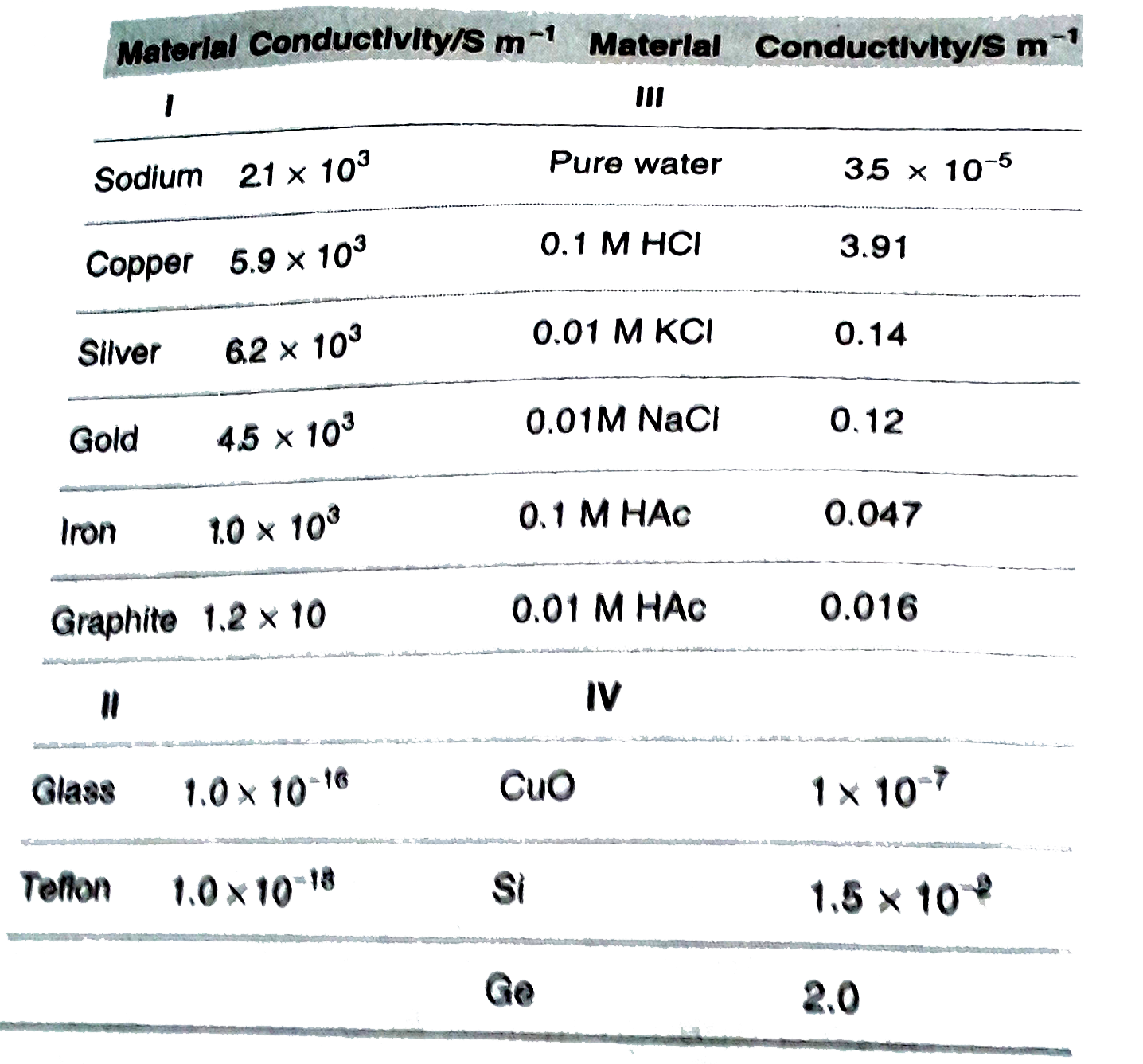
What is I,II,III,IV in the above table ?
View SolutionMatch the items of column I and column II and choose the correct option from the codes given below
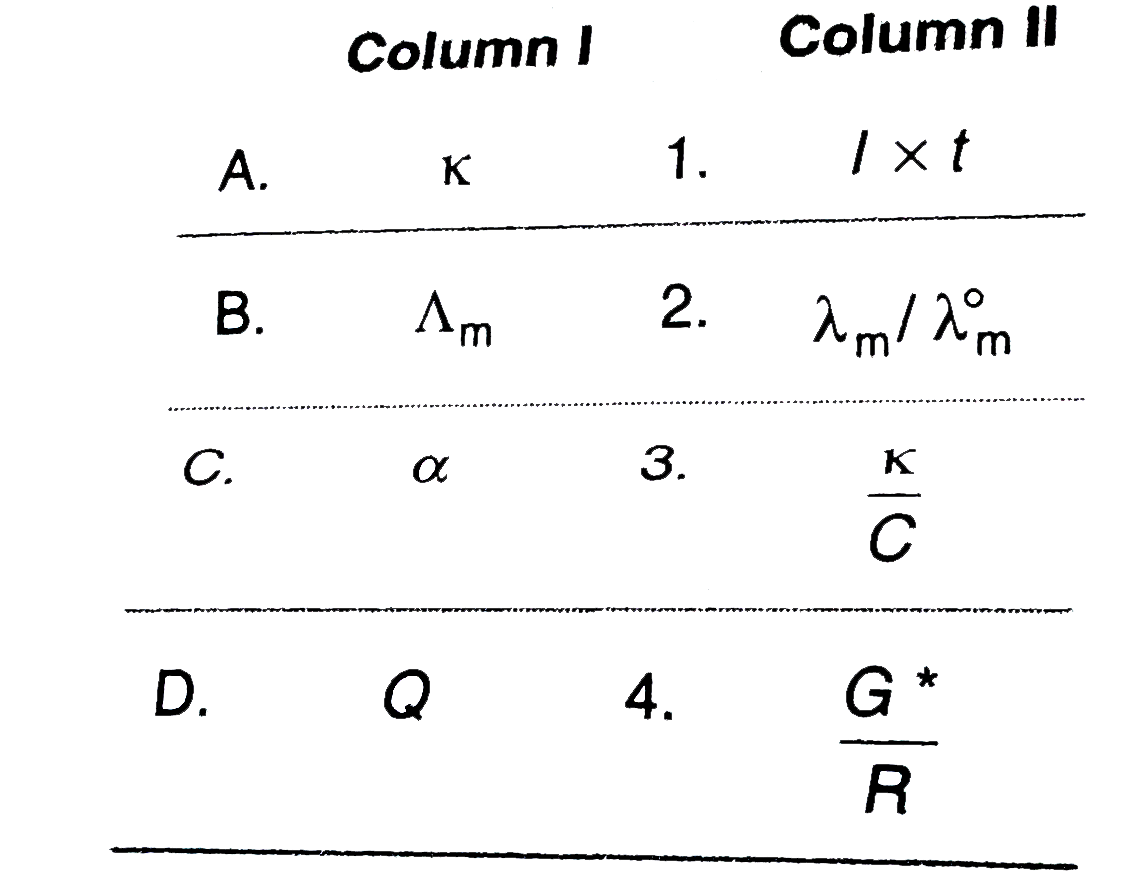
View SolutionThe logarithm of the equilibriium constant of the cell reaction corresponding to the cell
`X(s)|x^(2+)(aq)||Y^(+)(aq)|Y(s)` with standard cell potential `E_(cell)^(@)=1.2V` given by
View SolutionAt `25^(@)C` temperature the cell potential of a given electrochemical cell is 1.92 V
`Mg(s)|Mg^(2+)(Aq)x M||Fe^(2+)(aq)0.01 M |Fe(s)`
Given `E_(Mg//mg^(2+))(Aq)=2.37 v`
`E_(Fe//Fe^(2+))^(@)(Aq)=0.45 V` Find the value of x
View SolutionFor the following cell reaction
`Ag|Ag^(+)|AgCI|CI^(-)|CI_(2)` Pt
`triangle G_(f)^(@)(Ag^(+))=78 Kj // mol`
`E^(@)` of the cell is
`E^(@)` of the cell is
View SolutionTwo concentration cells of Ag with Ag electrode in `AgNO_(3)` in first cell concentration of one electrode is 1M and other electrode is 0.1 M and emf is 0.065 V in second cell concentration of one electrode is 1 M and other electrode is 0.01 M calculate the emf of second cell
View SolutionThe zinc / siver oxide cell is used in electric watches
`Zn rarr Zn^(2+) + 2e^(-), E^(@)=0.76 V`
`Ag_(2)+H_(2)O+2e^(-)rarr2ag+2OH^(-),E^(@)=-0.344 V`
what is `triangle G^(@)` in joules for the reaction
View Solution`E_(1),E_(2)` and `E_(3)` are the emf of the following three galvancic cells respectively
`(i) Zn(s)|Zn^(2+)(0.1 M)||Cu^(2+)(1 M)|Cu(s)`
` (ii) Zn(s)|Zn^(2+)(1 M)||Cu^(2+)(1 M)|Cu(s)`
`(iii) An(s)|An^(2+)(1 M)||Cu^(2+)(0.1 M)|Cu(s)`
Which one of the following is true ?
View SolutionSmall quantities of compounds TX, TY and TZ are put into separate test tubes containing X, Y and Z solutions. TX does not react with any of these. TY reacts with both X and Z. TZ reacts only with X. The decreasing order of ease of oxidation of the anions `X^(-),Y^(-) and Z^(-)` is
View Solution`E_(Fe^(3+)//Fe)^(@)=-0.036V,E_(Fe^(2+)//Fe)^(@)=-0.0439V`. The value of standard electrode potential for the change, `Fe^(3+)(aq)+e^(-)toFe^(2+)(aq)` will be
View SolutionA device that convers energy of combustion of fueles like hydrogen and methane, directly into electrical energy is known as .
View SolutionAn alloy of Pb Ag weighing 1.08 g was dissolved in dilute `HNO_(3)` and the volume made to 100 mL A silver electrode was dipped in the solution and the emf of the cell set up pt (s) `H_(2)(g)|H^(+)(1M)||Ag^(+)(aq)|Ag(s)` was 0.62 V if `E_(cell)^(@)=0.80 V` what is the percentage of Ag in the alloy ? At `25^(@)C RT/F=0.6`
View SolutionThe standard oxidation potentials of Zn,Cu Ag and Ni electrodes are + 0.76 - 0.34 - 0.80 and + 0.25 V repectively which of he following reactin will provide maximum voltage
View SolutionThe standard emf of a galvanic cell involving cell reaction with n=2 is found to be 0.295 v at `25^(@)c` the equilibrium constant of the reaction would be (Given F= 96500 C `"mol"^(-1)m R =8 .314 "jk"^(-1) "mol"^(-1)` )
View SolutionThe standar reduction potentials of `Zn^(2+)|Zn,Cu^(2+)||Cu^(2+)|Cu| Zn |Zn^(2+)||Ag^(+)|AgIIICu|Cu^(2+)||Ag^(+)|Ag`
What is the correct order of `E_(cell)^(@)` of these cells ?
View SolutionThe Edision storage cell is represented as `Fe(s)|FeO(s)|KOH(aq)|Ni_(2)O_(3)(s)|Ni(s)`
The half cell reaction are
`Ni_(2)(s)+H_(2)O(l)+2e^(-)rarr2NIO(s)+2OH^(-),E^(@)=+0.40V` M
`FeO(s)+H_(2)O(l)+2e^(-)rarrFe(s)+2OG^(-),E^(@)=-0.87V`
What is th emaximum amount of electrical energy that can be obtained from one mole of `Ni_(2)O_(3)`?
View SolutionThe standard reduction potentials at 298 K for the following half reactions are given against eath
`Zn^(2+)(aq)+2e^(-) rarr Zn(s),-0.762 V`
`Cr^(3+)(aq)+3e^(-)rarrCr(s),-0.740 v`
`2H^(+)(Aq)+2e^(-)rarrH_(2)(g),0.00V`
`Fe^(3+)(aq)+e^(-)rarrFe^(2+)(aq),0.770 V`
Which is the strongest reducing agent
View SolutionWhich of the following reaction cannot be a base for electrochemical cell ?
View SolutionStandard electrode potential data are useful for understanding the suitability of an oxidant in a redox titration some half cell reactions and their standard potentials are given below
`MnO_(4)^(-)(aq)+8H^(+)(aq)+5e^(-)rarrMn^(2+)(Aq)+4H_(2)O(l)^(@)=1.51 V`
`Cr_(2)O_(7)^(2-)(Aq)+14 H^(+)(aq)+6e^(-)rarr2cr^(3+)(aq)+7H_(2)O(l),E^(2)=1.38 V`
`CI_(2)(g)+2e^(-)rarr2CI^(-)(aq),E^(@)=1.40 V`
Identify the incorrect statement regarding the qunatitavite estimation of gaseous `Fe(NO_(3))_(2)`
View Solution`Zn|Zn^(2+)(a=0.1 M)||Fe^(2+)(a=0.01M)|Fe`
the emf of the above cell is 0.2905 V Equilibrium constant for the cell reaction is
View SolutionCondider the following statement
I Metallic electrodes are dipped into electrolyte
II half cell sare connected by metallic wire through voltemeter and switch
III There is no need of salt bridge if the electrodes are dip in the same electrolyte
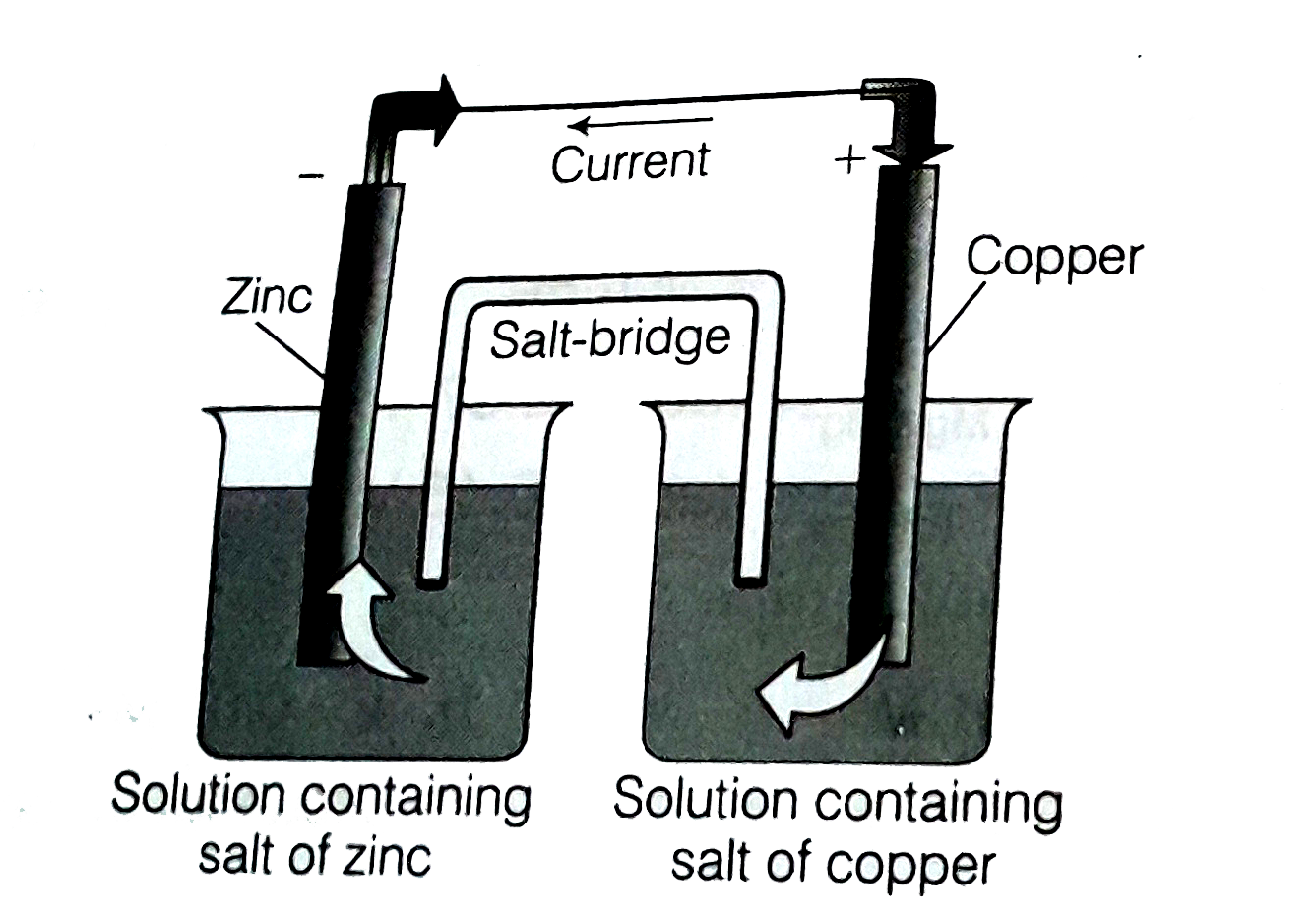
Which of the following statement (s) is /are true for the above diagram choose the correct option
View SolutionNernst equation for the reaction
`aA+bBoverset("ne"-)rarr cC+ dD` is
`E_(cell)=E_(cell)^(@)-(RT)/(nF) "ln" Q`
what is Q in the Nernst equation
View SolutionCalculate the equilibrium costant log `(K_(c))` for the reaction
`Zn(s)+Cu^(2+)(aq)rarrZn^(2+)(aq)+Cu(s)`
[Given `E_(cell)^(2)=1.1 V`]
View SolutionMatch the terms given in column I with the items given in column II and choose the correct option from the codes given below
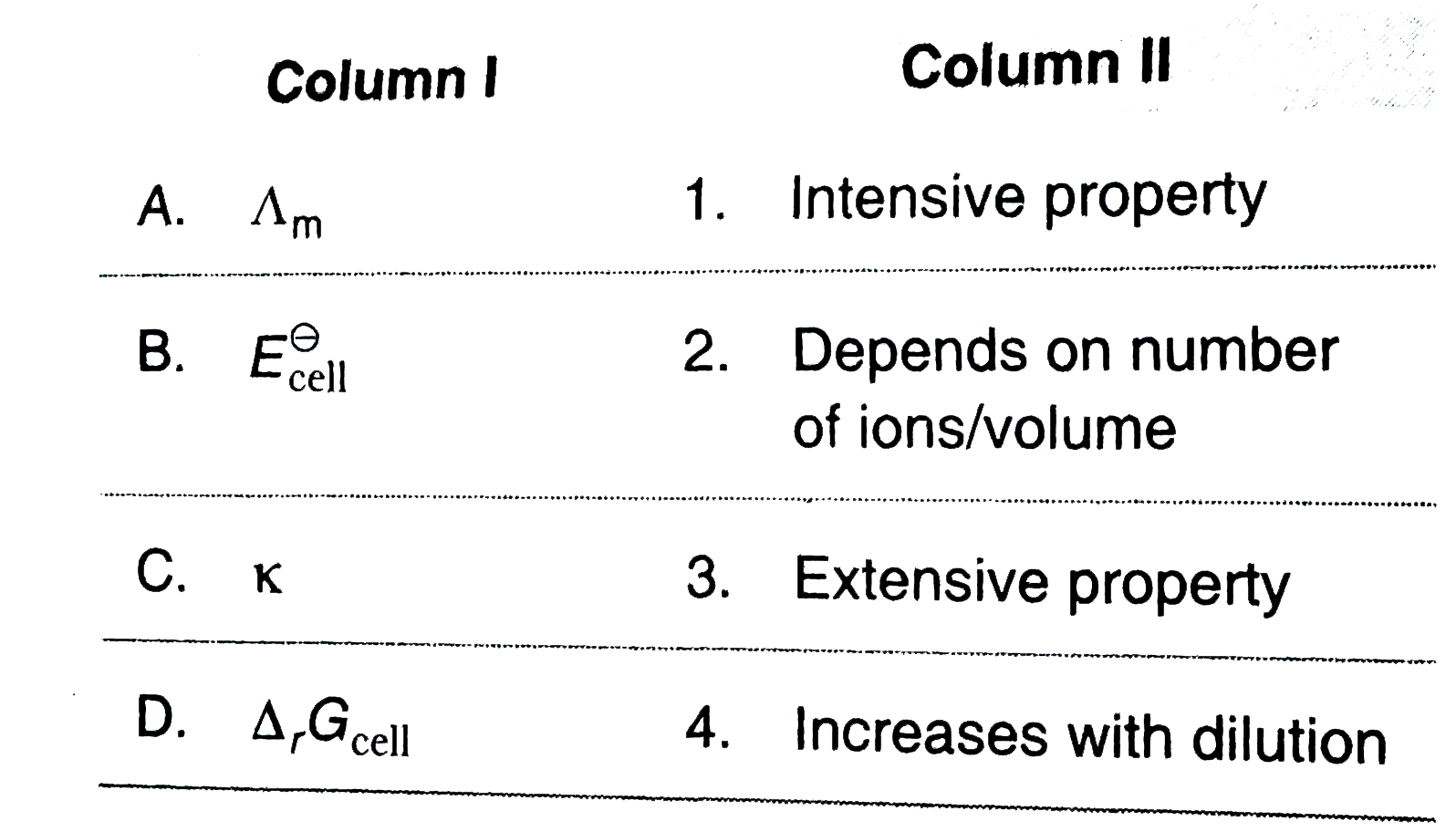
View SolutionElectrode potential for Mg electrode varies according to the euation
`E_(mg^(2+)//Mg)=E_(Mg^(2+)//Mg)-(0.059)/(2) log (1)/[(Mg^(2+))]`
the graph of `E_(Mg^(2+)//Mg) "vs" log [Mg^(2+)]`is
View SolutionThe cell `Zn | Zn^(2+)(1 M)||Cu^(2+)(1 M)|Cu`
`E_("cell")^(@)=1.10 V` was allowed to be copletely discharged at 298 K The relative concentration of `(Zn^(2+))/(Cu^(2+))` is
View SolutionUsing the standart electrode potential find out the pair between which redox reaction is not feasible
`E^(-)` values `Fe^(3+)//Fe^(2+)=+0.77 I_(2) / I =+0.54 V`
`Cu^(2+)//Cu=+0.34 Ag^(+)//Ag=+80 v`
View SolutionCalculate the potential corresponding to the following cell
`Pt|Co^(2+)(2.0 M),Co^(3+)(0.01 M||Cr^(3+)(0.5M)`
`Cr_(2)O_(7)^(2)(4.0 M),H^(+)(1.5 M)|Pt`
Given `E_(Co^(2+)//Co^(3+))^(2)=-1.82 V, E_(Cr_(2)O_(7)^(2)-//Cr^(3))^(2)=+1.33 V`
View SolutionFor hydrogen oxygen fuel cell at atm and 298 K
`H_(2)g+1/2O_(2)(g)rarrH_(2)O(l),triangle G^(@)=-240 KJ`
`E^(2)` for the cell is approximately (Gevien F=96500 C)
View Solutionwhich of the following statement is true for the electrochemical daniell cell
View SolutionStandard free energies fo formation (in kJ/ mol) at 298 K are -237.2 - 394.4 and -8.2 for `H_(2)O(l)CO_(2)(g)` and pentane (g) respecitively the value of `E_(cell)^(@)` for the pentane oxygen fuel cell is
View SolutionWhich of the followng reaction is used to make a fuel cell
View SolutionThe cell reaction of the galvanic cell
`Cu(s)|Cu^(2+)(aq)||Hg^(2+)(aq)|Hg(l)` is
View SolutionMatach column I with column II related to the figure given below and then select the appropriate option from the codes given
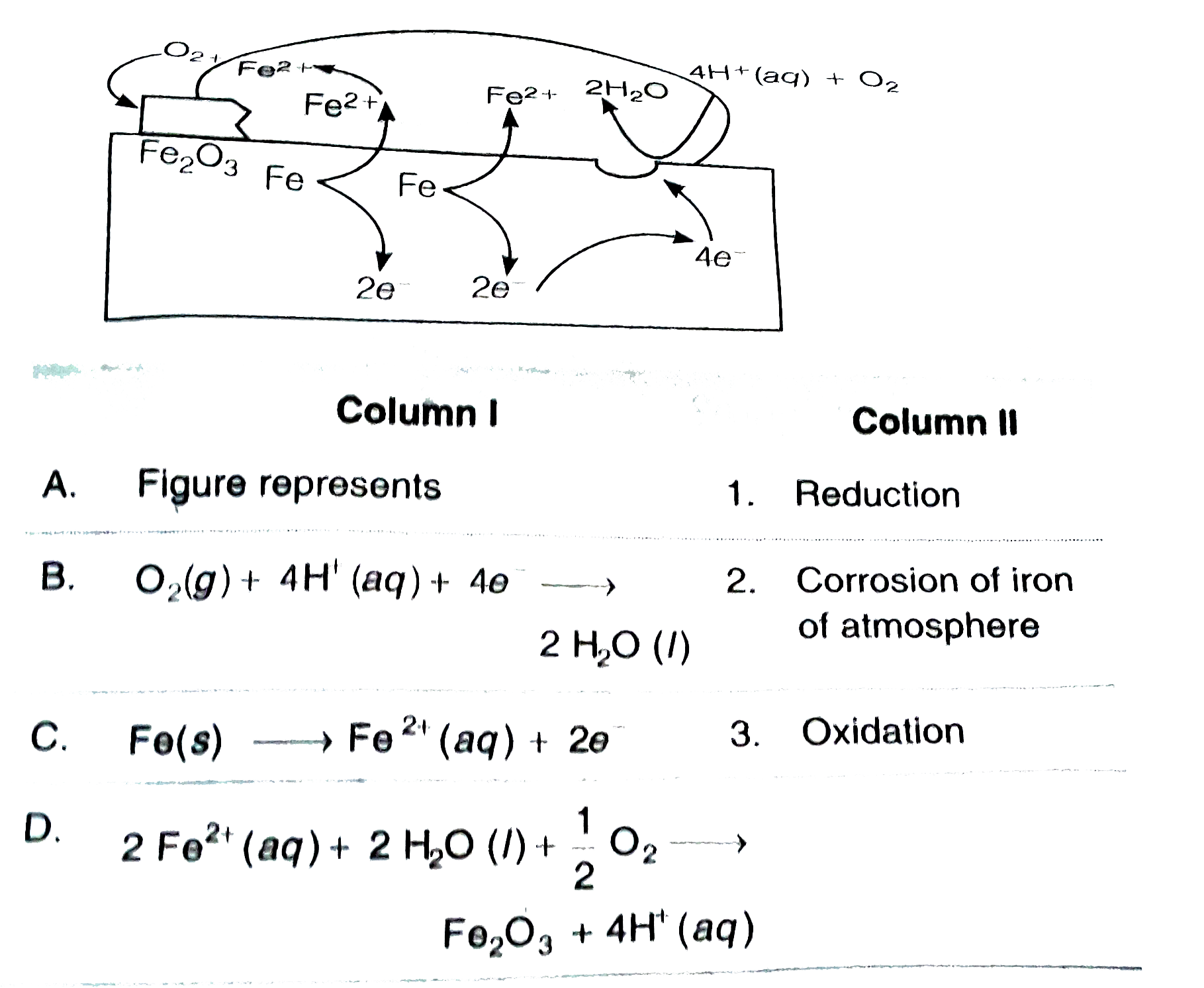
View SolutionWhich of the following reaction cannot be a base for electrochemical cell
View SolutionThe electrochemical cell stops working after sometimes because
View SolutionIn a hydrogen oxygen fuel cell combustion of hydrogen occurs to
View SolutionIn a galvanic cell the eletrons flow from
View SolutionIn the electrolytic cell flow of electrons is form
View SolutionWhat is the anode and cathode in the given in the below
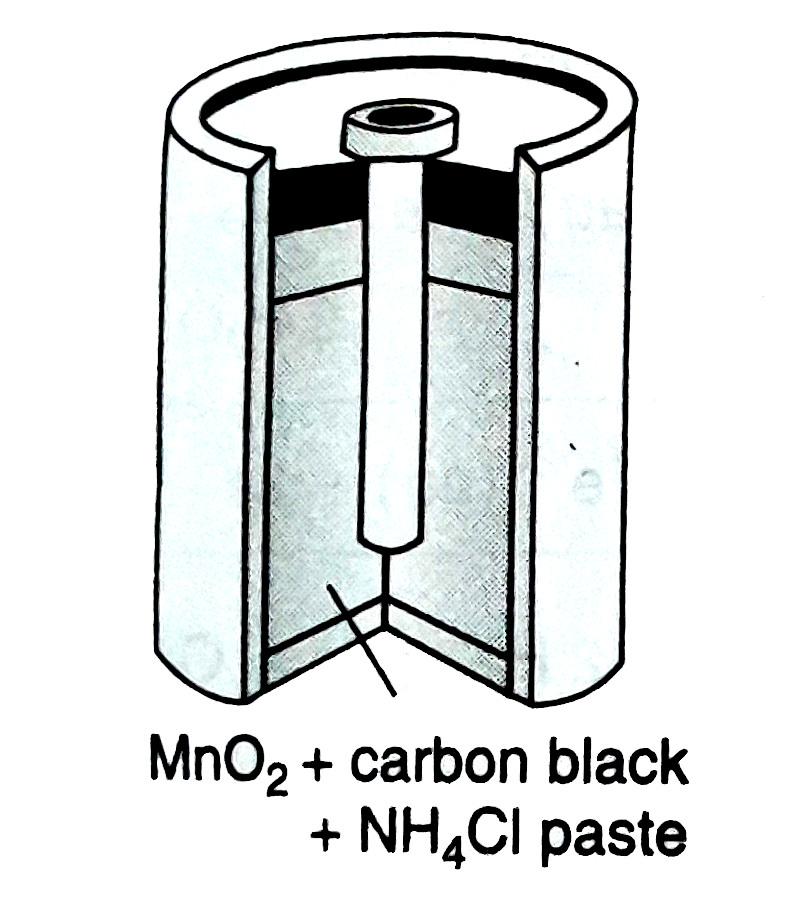
View SolutionWhat is the product produced by this cell
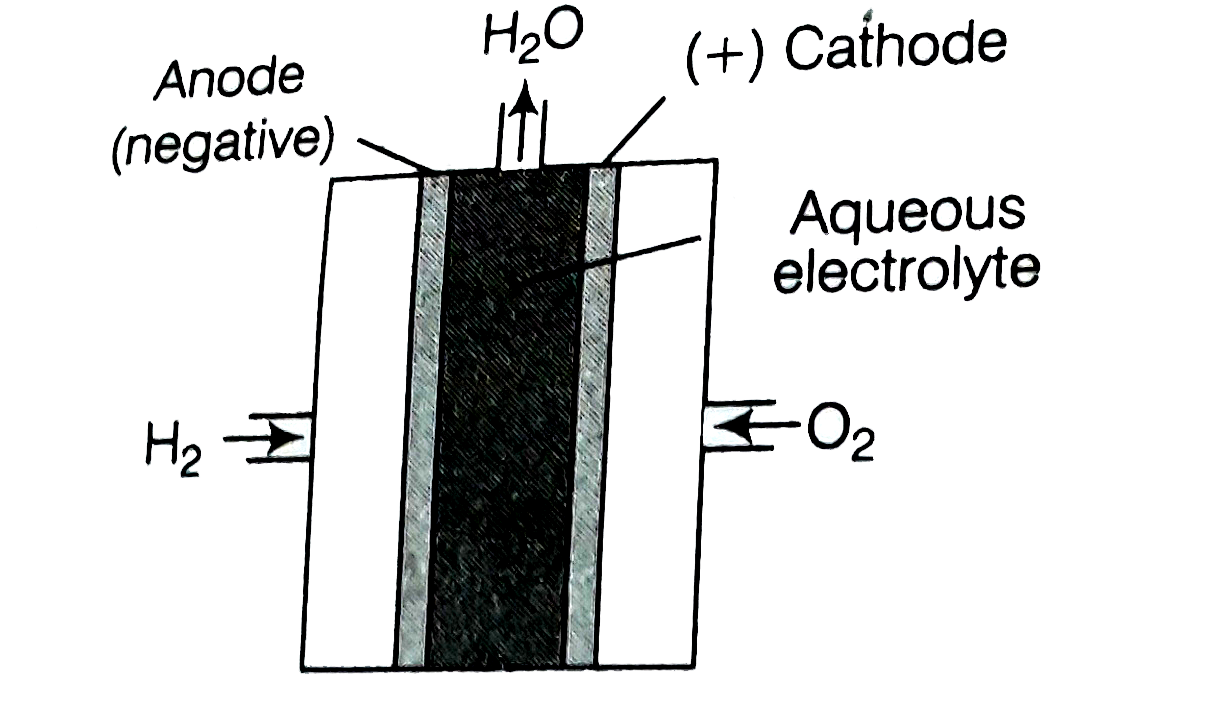
View SolutionMark the incorrect statement (s) for fuel cell
View SolutionWhich of the following statement (s) is / are true for secondary cell
View SolutionCondisder the following reactions at `1100^(@)C`
`(i)2C+O_(2) rarr 2CO, triangle G^(@)=-460 kJ mol^(-1)`
`(ii) 2Zn +O_(2) rarr 2 Zno, triangle G^(@)=-360 kj mol^(-1)`
Based on the observation select the correct alternate
View Solution`E_(cell)^(@)` for some half cell reaction are given below on the basis of these mark the correct answer
`I H^(+)(aq)+e^(-)rarr1/2 H_(2)(g),E_(cell)^(-)=0.00 V`
II`2H_(2)O(l)rarrO_(2)(g)+4H^(+)(Aq)+4e^(-),E_(cell)^(-)=1.23 V`
III `2SO_(4)^(2-)(aq)rarrS_(2)O_(8)^(2-)(aq)+2e^(-)+2e^(-),E_(cell)^(-)=1.96 V`
View SolutionThe standard electrode potentials for the ractions
`Ag^(+)(aq)+e^(-) rarr Ag(s)`
`sn^(+)(aq)+2e^(-)rarrSn(s)`
at `25^(@)C` are 0.80 V and -0.14 V respectively the emf of the cell `Sn|Sn^(2+)|(1 M)|Ag^(+)(1M)|` Ag is
View SolutionThe equation representing the process by which standard reductin potential of zinic can be defined is
View SolutionThe emf of the cell `Ni|Ni^(2)(1.0 M)||Ag^(+)(1.0 M)|Ag`
`E^(@)` for `Ni^(2+)//Ni=-0.25 V, E^(@)` for `Ag^(+)//Ag^(+)//Ag=0.80 V` is given by
View Solution
Exercise 2 questions and complete solutions for chapter ELECTROCHEMISTRY of MHTCET PREVIOUS YEAR PAPERS AND PRACTICE PAPERS of Class 12